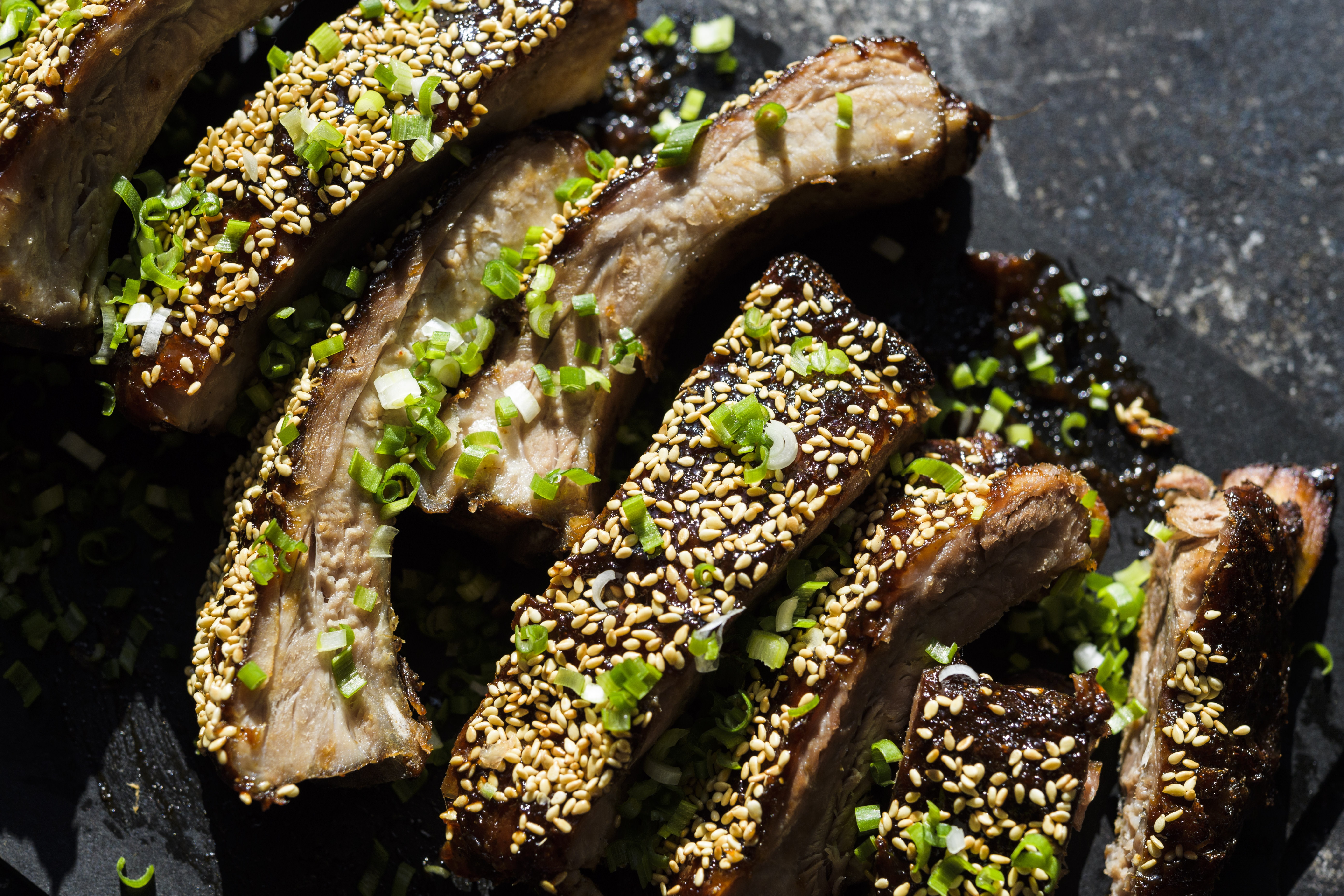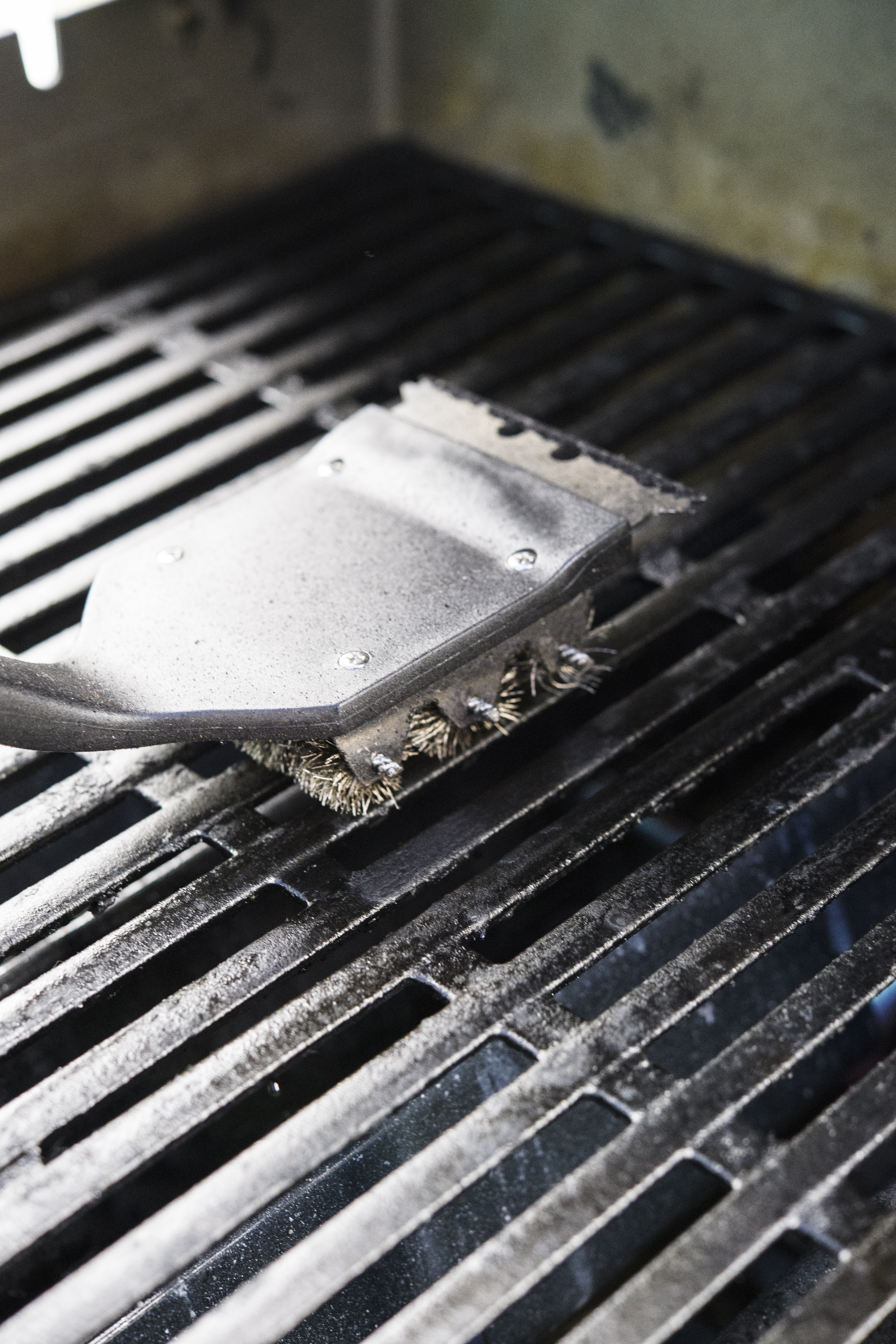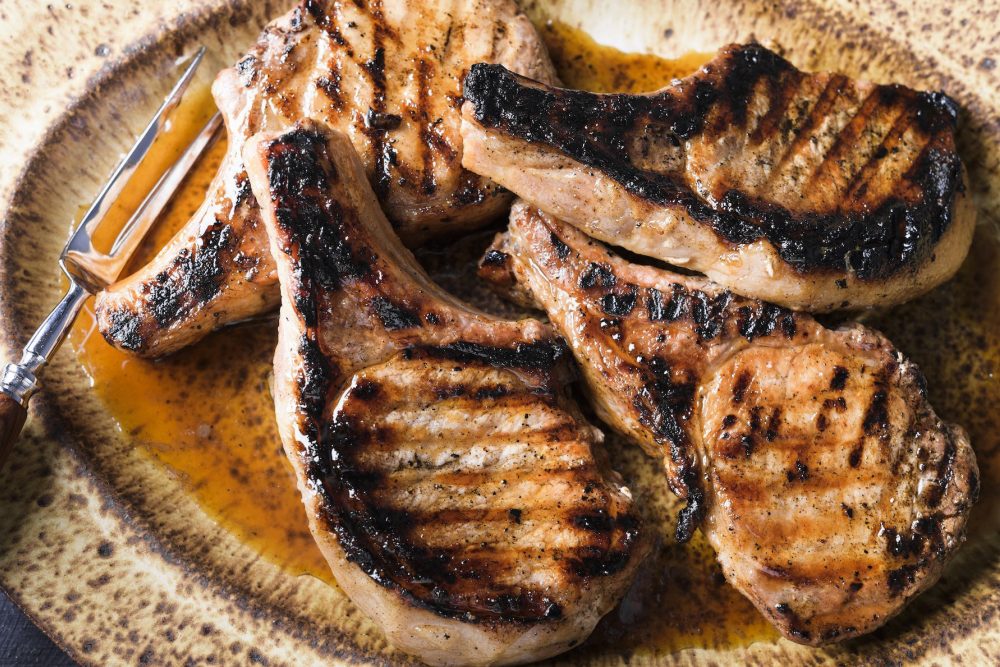Backyard barbecues should be simple, low-maintenance affairs. But that doesn’t mean there isn’t a good amount of misinformation floating around out there—myths surrounding everything from the best way to cook ribs to why you should oil your grill grates. (Spoiler alert: You shouldn’t.)
We spoke with grilling expert and cookbook author Meathead Goldwyn to get to the bottom of some of the most common barbecue myths, starting with the science behind the ever-popular beer can chicken. For more, look out for Meathead’s appearance on Milk Street Radio on June 28 and check out his book, “Meathead: The Science of Great Grilling and Barbecue.”
The Myth: Beer Can Chicken Is Juicy and Flavorful Thanks to the Beer, Of Course
The Meat of the Matter: It might be a fun presentation, but beer can chicken is nothing more than roast chicken, and it’s not even the best way to roast a chicken, Meathead points out. Contrary to popular belief, the beer doesn’t steam the meat. That’s because beer, which is mostly water, boils at 212 degrees and will never boil at the 160 or so degrees reached inside the chicken. Furthermore, even if the beer could boil, it could not penetrate the chicken, which is fully saturated with water. Finally, by inserting the can into the cavity, you’re limiting the amount of surface area for browning, which is where real flavor comes from. Cut the chicken up or spatchcock to create more browning (flavor) via more surface area, Meathead suggests. Go ahead and make beer can chicken, but do it for presentation, and not a moister, more flavorful bird.
The Myth: Soak Your Wood Chips for More Smoke
The Meat of the Matter: Soaked wood chips don’t produce extra smoke; those white clouds are mostly steam. The most flavorful smoke is the kind you can’t see, which comes from dry wood chips. If you toss wet wood chips on top of hot coals, you’ll also cool down the coals and lose control of the temperature. “If you go to a barbecue competition, you won’t see any of the top pros soaking wood. It’s just not the right thing to do.” For that added smokiness, Meathead will throw larger wood chunks on top of coals. “Whole wood, dry wood and let it burn.”
The Myth: If you’re lookin’, you ain’t cookin’.
The Meat of the Matter: Lifting the lid off your grill won’t slow down cooking to any noticeable degree. “Hot air can’t penetrate the meat. It’s the outside of the meat that cooks the inside of the meat. That’s why when you cook something like a big steak or a chicken, the temperature near the surface is higher than it is in the center,” Meathead explains. So don’t worry about that small amount of hot air escaping from a lifted lid. “The meat barely notices. The center? It has no idea.” Don’t leave the cover off for 15 minutes, especially in cold weather, but if you want to paint the meat or get a quick look, you should do so worry free.
The Myth: You Should Parboil Ribs
The Meat of the Matter: Because ribs are such a tough cut of meat, cooks will often simmer them to tenderize. But Meathead warns against this method because you’ll lose so much flavor to the water. Water is a solvent and pulls a lot of flavor out. “That’s how you make soup!” he says. For maximum flavor, roast ribs in warm, dry air.

The Myth: You Should Match the Meat with the Wood
The Meat of the Matter: “People get obsessed with the wood. But the end product that you’ll serve depends on many factors,” Meathead says. The quality of the meat is the most important factor: Where does it come from? How much marbling is there? What grade and what breed is it? Temperature is also key and so is seasoning. Yes, wood creates smoke, which does contribute to flavor, but Meathead argues that hickory from Arkansas can taste different from hickory from New York. Is it shagbark hickory or pignut hickory? Is it air dried or kiln dried? Does it have a lot of bark or no bark? Wood is not regulated like wine. You don't know if what's in the bag is actually what's on the label.“Stop obsessing over wood. Pick one and stick with it and get the other variables under control first,” he advises.
The Myth: Always Bring Meat up to Room Temperature Before Cooking
The Meat of the Matter: Meathead takes meat straight from the refrigerator to the grill. One, it takes a really long time for meat to come to room temperature, especially a thick cut, which then increases the risk of contamination if not handled properly. He also says that smoke adheres better to cold surfaces, producing more flavor.
The Myth: Lump Charcoal Is the Superior Heat Source
The Meat of the Matter: “A lot of people feel like lump charcoal is more natural and therefore better,” Meathead says. But he prefers briquettes for a few reasons. One, oftentimes in lump charcoal, the wood will not have carbonized at the center and the pieces are all different sizes, which means smoke output is unpredictable. “I’m a control freak,” Meathead says. “I need a uniform source of heat.” He’s also seen all manner of debris inside bags of lump charcoal, from pieces of metal to a computer cable, and cautions that there is no regulation for making charcoal; it might not be as natural as it appears. Use uniform briquettes for heat and add pieces of wood for flavor, he suggests.
The Myth: You Should Oil Your Grill Grates
The Meat of the Matter: Oil your food, not your grates. Oil on the grates can smoke and burn, which smells bad. Because your meat is cool, if you oil the meat, it doesn’t smoke and burn as easily. If you’re worried about calories, don’t be. Most of the oil will drip off anyway. And remember, “if the meat does start to stick, leave it there. It will eventually let go.”

The Mytht: Spice Rubs Penetrate the Meat
The Meat of the Matter: Only salt penetrates meat. Garlic, sugar or any other seasoning besides salt just rest on the surface. You may taste them when you take a bite, but that’s just because it’s on the exterior. Salt, on the other hand, separates into ions—sodium and chloride—when it hits meat, which can work their way to the center, altering the protein so that it can better hold onto moisture and also amplifying flavor. Sprinkle a spice rub on right before cooking for good texture and a flavorful crust, but don’t expect it to do anything more.
The Myth: Planked Fish Is the Best Way to Grill Seafood
The Meat of the Matter: “A piece of wood a quarter inch thick is an insulator. It blocks the heat, so all the heat comes from above. You’re cooking one side only,” Meathead says. “You might as well cook in a frying pan.” Moreover, the wood never gets hot enough to impart flavor, so you’re better off throwing wood chips on a fire. It’s a nice presentation, but you can’t use the plank twice. “There are much better ways,” he stresses. “Just like beer can chicken.”
Join the conversation on Facebook, Twitter, Instagram and Pinterest.
Stay up to date on free recipes, new radio episodes, classes, events and more with our newsletter. Sign up here.




